Between April 13 and April 23 1966 Bob Dylan Australia World Tour Photos

Australia was the first major stop (outside the US) for Dylan’s legendary World Tour in 1966. The fortunate few thousand here who witnessed it saw what proved to be the watershed moment in Dylan’s career. It was the culmination of Dylan’s evolution from folkie icon to fully-fledged rock star, which had begun with his controversial “electric” debut at the Newport Folk Festival on July 25, 1965. The punishing schedule of the 1965-66 period – three landmark albums somehow crammed in around a frantic round of tours and other engagements – took its toll on Dylan. “Credits: Tricia Jungwirth and Olof Björner’s Yearly Chronicles“
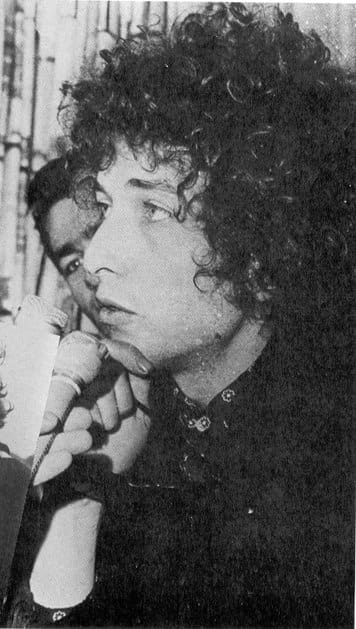
The ’66 world tour was to be his last major concert outing for almost 8 years: seared by the experience, Dylan withdrew after his famous motorbike accident in July and, apart from sporadic solo appearances at events like the Isle Of Wight Festival and the Concert For Bangladesh, he did not undertake another major tour until the Before The Flood tour in 1974, which reunited him with The Band.

By the time he arrived in Australia, just prior to his 25th birthday, Dylan was at the height of his fame and was now, along with The Beatles, one of the most famous and popular performers in the world.

Thanks to the agressive style of his manager Albert Grossman, he was also one of the most highly paid

Like The Beatles, his popularity, and his perceived role as a social spokesman exposed him to an unprecedented level of media and fan attention. His press conferences and interviews became a cross between an police interrogation and a boxing match, with the wry, caustic and cynical Dylan sparring with (and sometimes mauling) the journalists, who in return probed to find flaws in this new musical demigod.
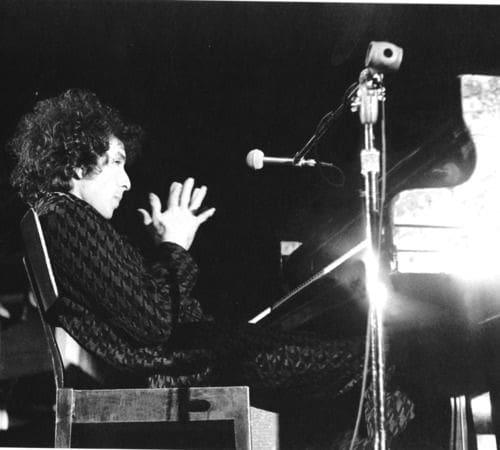
His songs were taking rock music to a new level of complexity and maturity, but in doing so he had left far behind him the folk style that had made him famous. Many older fans, who took folk music very seriously, felt betrayed by Dylan’s move into what they saw as the ‘corrupt’ world of pop music
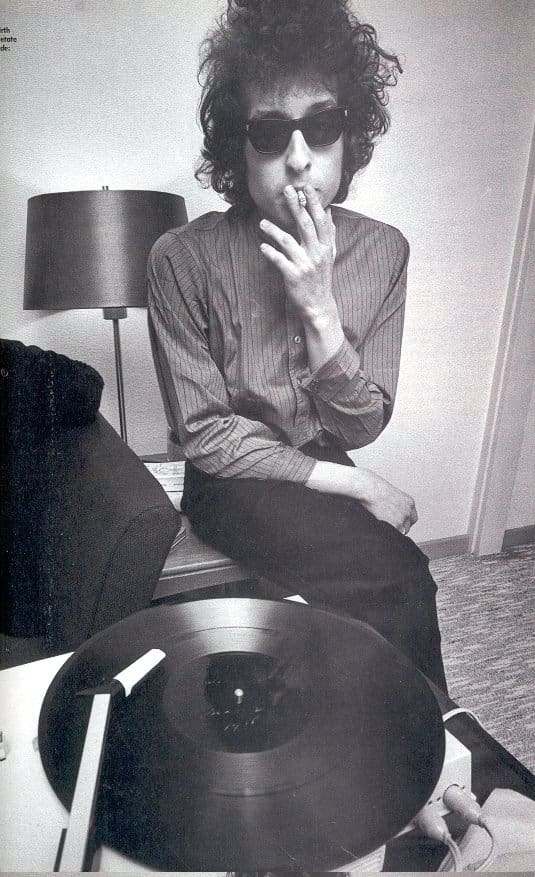
He famously outraged the folk audience when he performed his second set at the 1965 Newport Folk Festival backed by an electric band, comprising members of the Paul Butterfield Blues Band and organist Al Kooper (who had played on the legendary Like A Rolling Stone). Folk patriarch Pete Seeger was apparently so angered by Dylan’s electric set that he tried to pull the plug on the PA system, resulting in a fight between him and Albert Grossman.
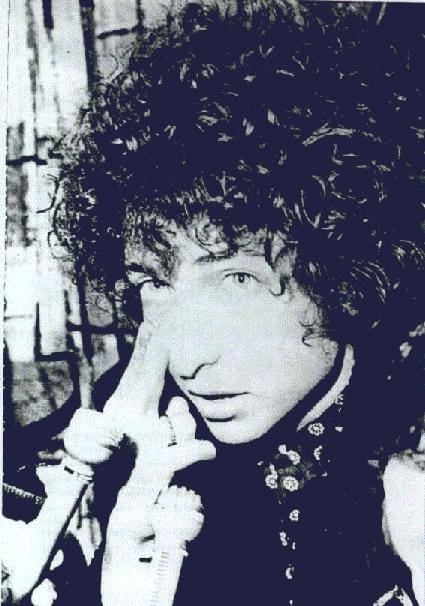
Dylan was deeply committed to his new music, and determined to present it the way he wanted – whether the press and audiences liked it or not. He began his Fall 1965 Tour in August that year, backed by a 4-piece group that consisted of two members of Ronnie Hawkins’ former backing band The Hawks (guitarist Robbie Robertson and drummer Levon Helm), plus bassist Harvey Brooks and organist Al Kooper, who played the organ on Like A Rolling Stone. From the outset they experienced hostility from audiences across the US. Partway throught the tour, in Septemeber, Brooks and Kooper left the group, unwilling to continue in the face of the nightly jeering and catcalls. They were replaced by the other three members of The Hawks – Garth Hudson, Richard Manuel and Rick Danko – thus completing what many consider to be Dylan’s perfect backing band.
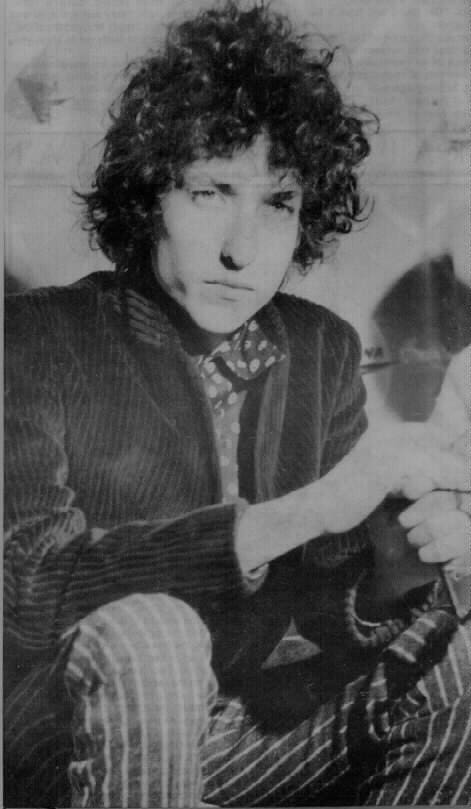
The ’66 World Tour tour commenced in early February, and travelled through the US and Canada, interspersed with sessions for Dylan’s next LP (Blonde On Blonde). Audience reaction to the tour was very mixed; many were excited by the new direction, but older fans objected vehemently to Dylan’s new style, and expressed their displeasure loudly. Volume was a critical issue: Dylan and his musicians were using the best amplification available, and by 1966 standards they played very loudly indeed. Used to the moderate sound levels at folk concerts, many fans were taken aback by the unprecedented volume, causing further negative reaction. According to a recent article about the English leg of the tour, in the music magazine Mojo, many of the supposed catcalls during the electric sets were actually calls to “turn it down”. Reviews of the new tour were generally negative, and press conferences were increasingly confrontational. Hostility from the press and audiences dogged him all through the ’66 world tour, culminating in the famous incident at the Manchester Free Trade Hall, when a heckler called him “Judas” – to which Dylan famously replied “I don’t believe you!” “Credits: Tricia Jungwirth and Olof Björner’s Yearly Chronicles“

Numerous dates on the tour were officially recorded and/or bootlegged; the “Judas” concert was captured on tape and was available on the famous Great White Wonder bootleg LP (which wrongly identified the concert as being at the Royal Albert Hall). It can now be heard on the official Live 1966 double-CD. The tour was also filmed in color by documentarist DA Pennebaker (who also captured Dylan’s 1965 UK tour for the landmark music documentary Don’t Look Back). The ’66 footage was put together by Dylan and Howard Alk as Eat The Document in 1971. It has been out of circulation for many years, although a segment from it is included in the BBC documentary series Dancing In The Street. When questioned by the author at the Sydney Film Festival in 1998, Pennebaker was evasive about the status of the ’66 footage, which is apparently still under Dylan’s control; he described himself as having been merely a camerman for this project. “Credits: Tricia Jungwirth and Olof Björner’s Yearly Chronicles“
Sources:
Credits: Tricia Jungwirth and Olof Björner’s Yearly Chronicles
“http://www.milesago.com/tours/dylan.htm”
“https://www.analogueseduction.net/all-other-vinyl/889853841011.html”
“http://www.leadingedgemusic.com.au/vinyl/live-in-sydney-1966#sthash.qzul6xR5.dpbs”
“https://www.amazon.co.uk/Live-Sydney-1966-VINYL-Dylan/dp/B01NA81WE9”
“https://twitter.com/Bob41Dylan/status/1277181997866246145”
“https://br.pinterest.com/pin/314407617720229689/”
“https://www.queuehall.com/bob-dylan-australian-tour”




















